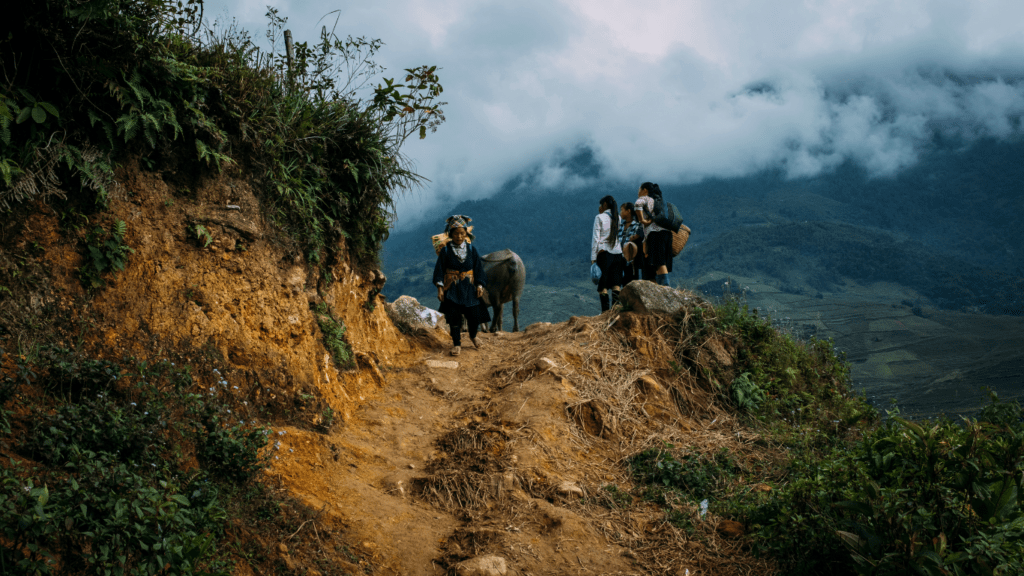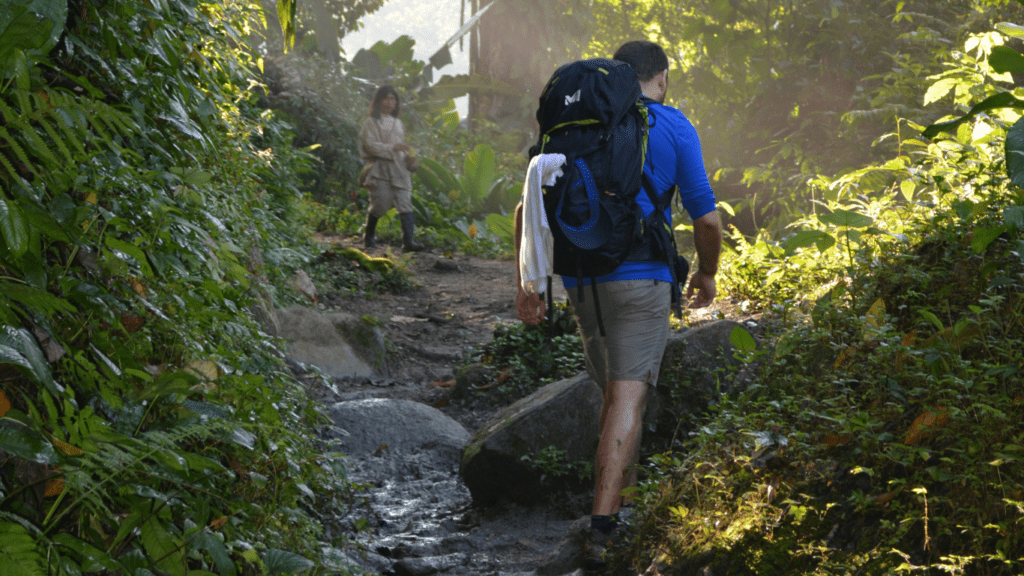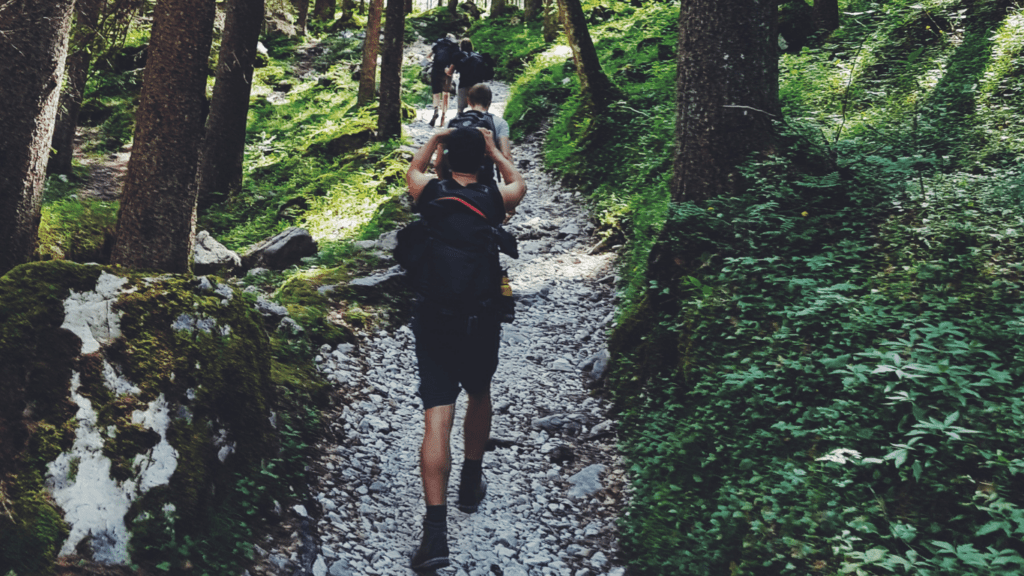Discovering Local Hiking Gems
Discovering local hiking gems enriches the hiking experience by unveiling trails often ignored by the masses. These paths offer unique, pristine environments to enjoy nature.
The Importance Of Exploring Nearby Trails
Exploring nearby trails keeps the adventure accessible and manageable. With limited travel time, these hikes fit into daily schedules, allowing frequent reconnection with nature. Proximity encourages revisiting, which lets hikers intimately understand the landscapes.
Benefits Of Hiking Hidden Trails
Hiking hidden trails offers serenity due to fewer visitors. These paths often feature untouched ecosystems, presenting opportunities for wildlife sightings. Lesser-known trails also promise unique vistas and diverse terrains not found on popular routes, making each hike a distinctive journey.
Top Hidden Hiking Trails By Region

Discover hidden hiking trails across different regions, offering unique landscapes and experiences. Here are some top picks:
North Region: Scenic Routes and Trails
The North Region features trails with panoramic views and diverse flora. One standout is the Cascade Falls Trail in the Adirondacks. This 2.1-mile loop showcases stunning waterfalls and lush greenery. Another hidden gem is the Superior Hiking Trail, stretching over 310 miles along Minnesota’s North Shore. For a shorter hike, try the 3-mile loop at Franconia Ridge in New Hampshire, offering breathtaking vistas of the White Mountains.
South Region: Serene Pathways and Views
The South Region offers tranquil trails with picturesque landscapes. In Tennessee, Fiery Gizzard Trail provides a challenging 12.5-mile hike through rugged terrain and dense forests. For a more relaxed hike, explore the Angel Falls Trail in Kentucky. This 2.3-mile trail leads to a beautiful waterfall and offers opportunities for bird watching. Lastly, the Turkey Creek Nature Preserve in Alabama features a 5.3-mile network of trails, ideal for hiking and photography.
East Region: Lush Forests and Streams
The East Region boasts trails through verdant forests and crystal-clear streams. The Devil’s Path in New York’s Catskill Mountains is a challenging 24.2-mile hike renowned for its steep ascents and scenic overlooks. For a shorter and easier hike, the Great Falls Park in Virginia offers a 4.2-mile trail along the Potomac River, with views of cascading waterfalls. The Quehanna Trail in Pennsylvania is a 75-mile loop through pristine woodlands, perfect for extended backpacking trips.
West Region: Rugged Terrain and Vistas
The West Region features rugged trails with spectacular vistas. The Lost Coast Trail in California offers a 25-mile journey along the isolated coastline, providing unparalleled ocean views and diverse wildlife. For mountain enthusiasts, the Enchantments in Washington State present a challenging 18-mile hike through alpine lakes and granite peaks. The Wave Trail in Arizona, a 6-mile round trip, reveals stunning sandstone formations and vibrant colors, making it a must-visit for adventurous hikers.
Essential Tips For Hiking Hidden Trails
Discovering hidden trails enriches the hiking experience, but it’s crucial to be well-prepared. Here are essential tips for hiking these secluded paths.
Preparing Your Gear
Selecting the right gear determines the success of a hike. Lightweight, moisture-wicking clothing keeps me comfortable, while sturdy hiking boots with good traction prevent slips. A well-fitted backpack ensures ample space for essentials like water, snacks, a first aid kit, and extra layers. A headlamp or flashlight is vital, in case the hike takes longer than expected.
Safety Precautions
Safety comes first when exploring isolated trails. Informing someone about my hiking plans and estimated return time makes a significant difference. I carry a whistle to signal distress and pack a small multi-tool for various emergencies. Staying on marked paths reduces the risk of getting lost, while checking weather forecasts helps me avoid unexpected weather changes. Keeping a map of the area is also beneficial.
Navigational Tools
Relying on precise navigation tools enhances the hiking experience. I utilize a GPS device or smartphone with a reliable map app, ensuring I download offline maps for areas with poor reception. A traditional compass and a physical map serve as backup tools. Marking the trail with small, natural indicators, like stacking stones, guides me back if trail markers are sparse or unclear.
These tips ensure a safe and enjoyable adventure while exploring hidden hiking trails, providing the confidence needed to delve into nature’s secluded corners.
Personalizing Your Hiking Experience
Customizing your hikes can make the journey more enjoyable and better suited to your preferences. I’ll guide you on how to select trails based on skill level and offer seasonal hiking tips.
Finding Trails Based On Skill Level
Not all trails suit every hiker. Some prefer gentle walks, while others seek rigorous climbs. Identifying the right trail can enhance your experience.
- Beginner Trails: Look for flat or slightly inclined paths. Trails like local parks or urban greenways fit this level. Examples include city trails with well-marked paths.
- Intermediate Trails: Choose trails with moderate elevation changes and longer distances. State parks often offer these paths. Think of forest trails with varied terrains.
- Advanced Trails: Opt for steep, challenging hikes. Mountain trails with significant elevation gain fall into this category. Look for remote trails with technical sections.
Seasonal Hiking Recommendations
Seasons impact trail conditions and scenery. Knowing when to hike certain trails maximizes your adventure.
- Spring: Ideal for blooming wildflowers and mild temperatures. Trails near creeks or waterfalls, like those in Great Falls Park, become visually stunning.
- Summer: Higher altitudes offer cooler temperatures and breathtaking views. Consider mountain trails to avoid heat, like the Superior Hiking Trail.
- Fall: Enjoy fall foliage on forested paths. Trails in national parks, such as Fiery Gizzard, display vibrant colors.
- Winter: Coastal or desert trails provide a reprieve from cold. Trails in warmer climates, like the Lost Coast Trail, offer milder weather.
By considering your skill level and the season, you can personalize your hiking experience, ensuring a safe and enjoyable adventure tailored to your preferences.



 Mindfulness & Nature Wellness Specialist
Eve Macleod is a certified mindfulness and meditation instructor who has spent years cultivating her passion for connecting wellness practices with the natural world. At Whisper Forest Ways, Eve focuses on guiding readers through techniques that harness the power of nature to promote mental, emotional, and physical well-being. Specializing in forest bathing, nature-based meditation, and eco-therapy, Eve helps readers discover how nature can enhance mindfulness practices and deepen relaxation. She believes that the natural world holds untapped potential for personal healing, stress relief, and spiritual growth, and through her articles and tutorials, she invites everyone to embark on a journey toward a more peaceful and centered life.
Mindfulness & Nature Wellness Specialist
Eve Macleod is a certified mindfulness and meditation instructor who has spent years cultivating her passion for connecting wellness practices with the natural world. At Whisper Forest Ways, Eve focuses on guiding readers through techniques that harness the power of nature to promote mental, emotional, and physical well-being. Specializing in forest bathing, nature-based meditation, and eco-therapy, Eve helps readers discover how nature can enhance mindfulness practices and deepen relaxation. She believes that the natural world holds untapped potential for personal healing, stress relief, and spiritual growth, and through her articles and tutorials, she invites everyone to embark on a journey toward a more peaceful and centered life.
